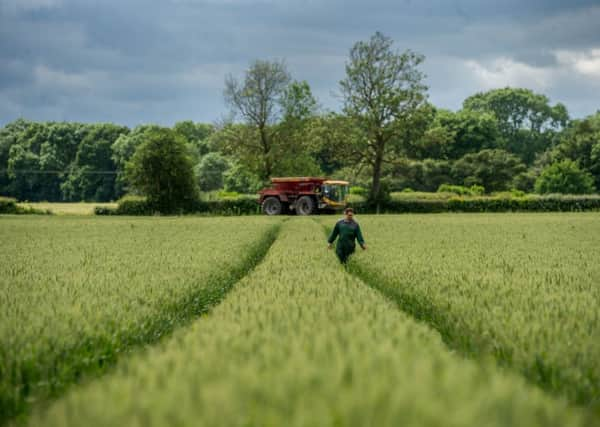Precision farming had to seen to be embraced on York farm


Mechanisation, technology and now precision farming have been game changers in an industry that no longer relies upon men with hands like shovels.
“It was hard work back in the 50s and 60s,” says John, who worked with his father Frank on the then tenanted 106 acres when his father bought the farm in the 1940s and now runs to 155 acres. Today’s farm enterprise now sees son Jonathan working across 1,250 acres and drilling 2,000 more.
Advertisement
Hide AdAdvertisement
Hide Ad“In those days it was me, an old feller and a horse and cart doing the mucking out. You didn’t do much on a night afterwards. My father also had shire horses. It’s a long way from where we are today.”
John and his brother Harry embraced new farm machinery particularly through their agricultural contracting business.
“We were involved in quite a bit of potato contracting and the first in this area to have our own potato harvester. We started with a Whitstead and moved on to Grimme.”
Jonathan is a recent convert to farming with GPS and Autosteer for his tractors and other equipment including a Lite Trac sprayer and spreader. He started three years ago and now has a base station, that ensures GPS for him and others nearby.
Advertisement
Hide AdAdvertisement
Hide AdHe believes in developing new kit on the engineering and fabrications side and is currently working on a new boom concept for spreading granular fertiliser. He hadn’t been taken with precision farming until he saw it work first-hand.
“I was very sceptical to start with but David Bradley of Russells told me that my life would be made so much easier with it and he was dead right. Russells specialise in precision farming.
“If you’ve a man on a machine and he’s overlapping half a metre or a metre all the time on cultivations every bout is costing you more money than you need to spend. It also means he’s sat on the tractor seat longer, which means he’s wearing metal out faster than it should be. You use more diesel and have greater tractor hours than necessary. It all adds up to huge additional costs that you can get rid of simply by using Autosteer.
“Application of fertiliser and sprays were previously made utilising the acreage of a field that would have been measured from the centre of the hedge. You then loaded up the chemical needed for perhaps a 20-acre field based on this data and will have been over-applying, but by GPS-ing every field there is no way you will over-apply. That can lead to vast savings over 1,250 acres.”
Advertisement
Hide AdAdvertisement
Hide AdAccuracy of GPS-based Autosteer is now down to 2cms and the message is getting across loud and clear to most farmers and contractors, as it has done with Jonathan, that it is the way forward.
“I drill a lot of corn and using Autosteer I can just keep going. I’m not as tired as I would be if I’d had to give everything to maintaining straight lines and it means I can be on the phone, organising the other lads while the work is being done for me. It’s what I call my green office.”